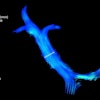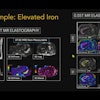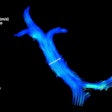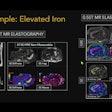
A cache of historical x-rays -- some almost 100 years old -- has revealed that benign bone tumors are common in healthy children, and they resolve on their own over time, according to a March 1 study in the Journal of Bone and Joint Surgery.
The findings should help clinicians give the families of children found to have benign tumors on x-ray better perspective, wrote a team led by Dr. Christopher Collier of Indiana University School of Medicine in Indianapolis.
"Although they may sound frightening, nonossifying fibromas and other common benign bone tumors in symptom-free children are harmless and may resolve over time," the team wrote. "These findings provide unique evidence to answer many commonly encountered questions when counseling patients and their families on benign bone tumors."
Benign bone tumors may appear in nearly 20% of healthy children who are undergoing imaging for other reasons, the group noted. The researchers discovered this after reviewing a collection of x-rays from a study called the Brush Inquiry that was conducted between 1926 and 1942. It consisted of a cohort of healthy children and was intended to explore pediatric skeletal growth and development; it could not be conducted today because of the ethical problem of radiation exposure, which was less understood at the time, the researchers noted.
Collier's group analyzed 25,555 digitized x-rays from 262 children, from infants to adolescents. The team's analysis found 35 benign bone tumors in 33 children, for a rate of 18.9% (although only the left side of the Brush Inquiry participants was imaged).
Nineteen of these benign tumors were nonossifying fibromas, which tend to appear when a child is about five, the team noted. Of these, seven resolved over time. The team also identified eight benign bone tumors called enostoses, six osteochondromas, and two enchondromas; these types of tumors tended to appear through the study participants' last available x-rays.
Collier's group hopes these findings will help clinicians better counsel anxious families.
"Understandably, these tumors cause a lot of anxiety for patients and families as they await confirmation that the tumor is benign," Collier said, in a statement released by Wolters Kluwer Health, the publisher of Journal of Bone & Joint Surgery. "They need reassurance and often ask how common these tumors are, when did they first appear, and whether they will resolve over time. Despite the inherent limitations of our historical study, it may provide the best available evidence regarding the natural history of asymptomatic benign childhood bone tumors."




















